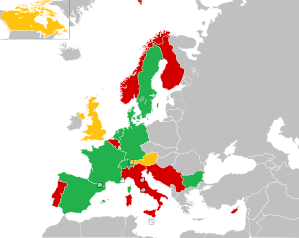Eurovision Young Dancers 1991
| Eurovision Young Dancers 1991 | |
|---|---|
| Dates | |
| Final | 5 June 1991 |
| Host | |
| Venue | Helsinki City Theatre, Helsinki, Finland |
| Presenter(s) |
|
| Director | Izan Lewenstam |
| Executive producer | Aarno Cronvall |
| Host broadcaster | Yleisradio (YLE) |
| Interval act | Documentary by Eila-Maija Mirolybov about the early stages of the competition and the dancers who did not reach the final. |
| Participants | |
| Number of entries | 15 |
| Debuting countries |
|
| Returning countries | None |
| Withdrawing countries | |
| Vote | |
| Voting system | A professional jury chose the top 3 participants. |
| Winning dancers |
Amaya Iglesias |
The Eurovision Young Dancers 1991 was the fourth edition of the Eurovision Young Dancers, held at the Helsinki City Theatre in Helsinki, Finland on 5 June 1991. Organised by the European Broadcasting Union (EBU) and host broadcaster Yleisradio (YLE), dancers from eight countries participated in the televised final. A total of fifteen countries took part in the competition. Bulgaria made their début while Austria, Canada and United Kingdom withdrew from the contest. However, the Austrian broadcaster ÖRF and the Canadian CBC broadcast the event.
Each country could send one or two dancers, male or female, who could perform one or two dances.
The non-qualified countries were Belgium, Cyprus, Finland, Italy, Norway, Portugal and Yugoslavia. Amaya Iglesias of Spain won the contest, with France and Denmark placing second and third respectively.
Helsinki City Theatre, was the host venue for the 1991 edition of the Eurovision Young Dancers.
The format consists of dancers who are non-professional and between the ages of 16–21, competing in a performance of dance routines of their choice, which they have prepared in advance of the competition. All of the acts then take part in a choreographed group dance during 'Young Dancers Week'.
Jury members of a professional aspect and representing the elements of ballet, contemporary, and modern dancing styles, score each of the competing individual and group dance routines. Once all the jury votes have been counted, the two participants which received the highest total of points progress to a final round. The final round consists of a 90-second 'dual', were each of the finalists perform a 45-second random dance-off routine. The overall winner upon completion of the final dances is chosen by the professional jury members.
...
Wikipedia


